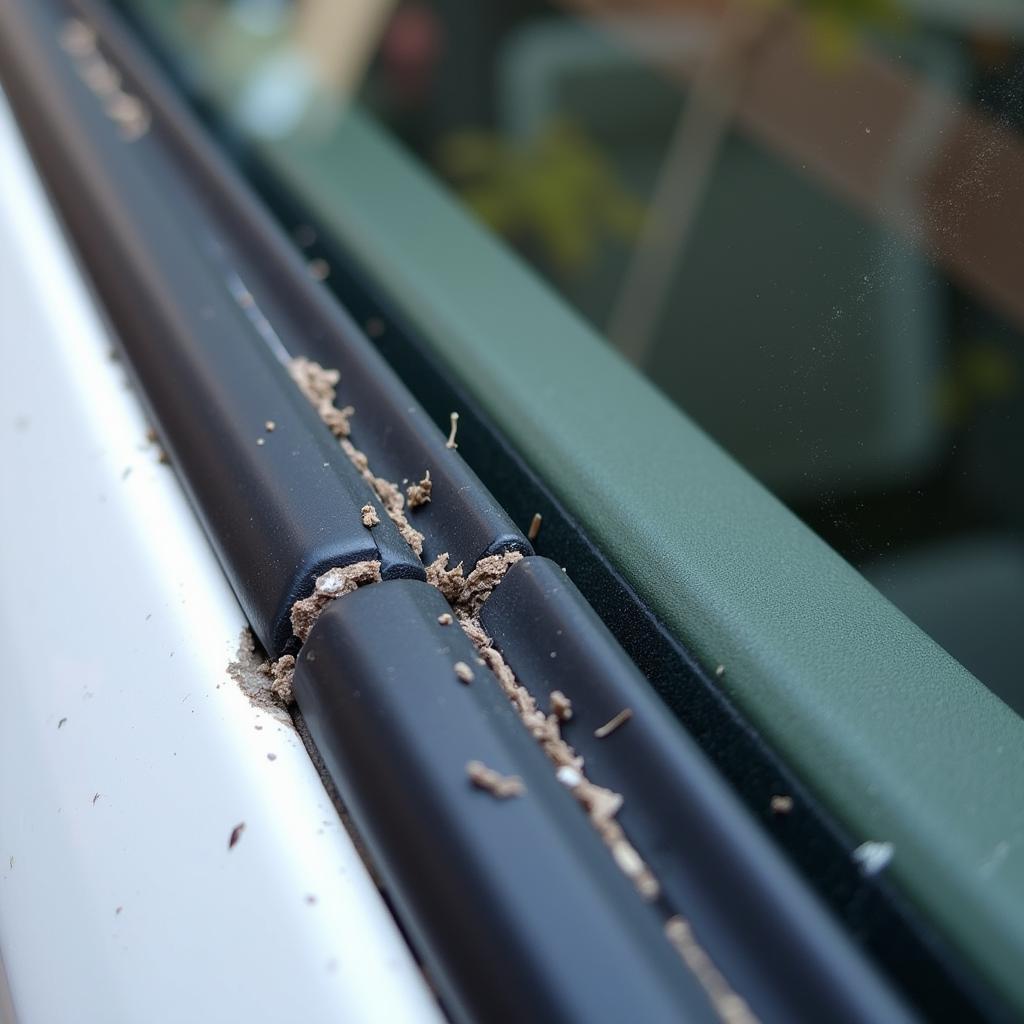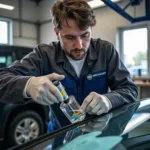A damaged or worn-out car window rubber seal can be a real pain, leading to annoying wind noise, water leaks, and even potential damage to your car’s interior. Fortunately, repairing a car window rubber seal is a manageable task that many car owners can tackle themselves with the right information and a little bit of patience. This guide will walk you through everything you need to know about repairing your car window rubber seal like a pro.
Understanding the Importance of Car Window Rubber Seals
Before we delve into the repair process, it’s essential to understand why car window rubber seals are so crucial. These seals, also known as weatherstripping, serve as a protective barrier between your car’s interior and the outside elements.
Here are some key functions of car window rubber seals:
- Preventing Water Leaks: A properly functioning rubber seal creates a watertight barrier that prevents rain, snow, and car washes from entering your vehicle.
- Reducing Wind Noise: The seal helps to minimize the amount of wind noise that enters your car’s cabin, providing a quieter and more enjoyable ride.
- Protecting Your Car’s Interior: By keeping out moisture, the rubber seal helps prevent the growth of mold and mildew, which can damage your car’s interior and pose health risks.
- Ensuring Proper Window Operation: The seal allows your car windows to move up and down smoothly within their tracks.
Common Signs of a Damaged Car Window Rubber Seal
Knowing when your car window rubber seal needs attention is crucial. Ignoring the signs of damage can lead to more severe problems down the line. Here are some common indicators:
- Visible Damage: Cracks, tears, or gaps in the rubber seal are clear signs that it needs to be repaired or replaced.
- Water Leaks: If you notice water pooling on your car’s floor mats or dripping from the roof lining after rain or a car wash, a damaged window seal is often the culprit.
- Increased Wind Noise: Excessive wind noise, especially at higher speeds, can indicate a problem with your car window seals.
- Difficulty Rolling Windows Up or Down: If your windows are sticking or becoming difficult to operate, a worn rubber seal could be hindering their movement.
How to Repair a Car Window Rubber Seal
Now, let’s get to the heart of the matter: repairing your car window rubber seal.
1. Gather Your Materials:
- Replacement Rubber Seal (if necessary): You can purchase a replacement seal online or from an auto parts store.
- Cleaning Solution: Use a mild soap solution or a dedicated rubber cleaner.
- Adhesive Promoter: This helps the adhesive bond properly to the rubber.
- Rubber Seal Adhesive: Choose an adhesive specifically designed for automotive rubber seals.
- Masking Tape: Use this to protect the surrounding areas of your car during the repair.
- Utility Knife or Scissors: For trimming and cutting the rubber seal.
- Clean Cloths: For cleaning and drying surfaces.
2. Prepare the Area
Thoroughly clean the area around the damaged rubber seal using a cleaning solution and a clean cloth. Ensure the surface is dry before proceeding.
3. Apply Adhesive Promoter (if necessary)
If your chosen adhesive requires it, apply a thin layer of adhesive promoter to the area where the rubber seal will be attached.
4. Apply Rubber Seal Adhesive
Carefully apply the rubber seal adhesive to the back of the rubber seal or the area where it will be attached to the car body. Follow the adhesive manufacturer’s instructions for drying time and application techniques.
5. Install the Rubber Seal
Carefully align the new rubber seal with the window channel, starting from one end and working your way across. Press firmly along the length of the seal to ensure a secure bond.
6. Secure and Allow to Dry
Use masking tape to hold the newly installed seal in place while the adhesive dries. Refer to the adhesive manufacturer’s instructions for the recommended drying time.
7. Trim Excess Seal (if needed)
Once the adhesive has completely dried, carefully trim any excess rubber seal using a utility knife or scissors. Ensure a flush and even finish.
Cost of Car Electric Window Repair
While repairing a car window rubber seal is often a DIY-friendly task, you may need to consider the cost of professional repair, especially if the damage is extensive or involves the electric window mechanism. Here are some factors that can influence the cost of car electric window repair:
-
Severity of the Damage: Minor repairs, such as replacing a damaged seal, tend to be less expensive than major repairs involving the window motor or regulator.
-
Make and Model of Your Vehicle: Repair costs can vary depending on the make and model of your car. Some vehicles have more complex window systems that may be more expensive to repair.
-
Labor Costs: Labor charges can vary significantly depending on the location and the mechanic’s hourly rate.
To get a more accurate estimate for electric car window repair costs, consider checking online resources like CarRepairOn.com, which can provide detailed information about repair costs in your region.
Prolonging the Life of Your Car Window Rubber Seals
To prevent premature wear and tear on your car window rubber seals, consider these preventive maintenance tips:
-
Regular Cleaning: Clean your car window rubber seals regularly using a mild soap solution and a soft brush or cloth. This helps remove dirt, debris, and harmful contaminants.
-
Lubrication: Apply a silicone-based lubricant to your car window rubber seals every few months to keep them supple and prevent drying and cracking.
-
Avoid Harsh Chemicals: Refrain from using harsh chemicals or abrasive cleaners on your rubber seals, as these can damage the rubber and shorten its lifespan.
Conclusion
Repairing a car window rubber seal is an achievable task for many car owners, saving you money on potentially costly repairs down the road. By following these steps and taking preventive measures to care for your car’s seals, you can ensure a quiet, comfortable, and leak-free driving experience for years to come. Remember, a little maintenance goes a long way in keeping your car in top condition.


